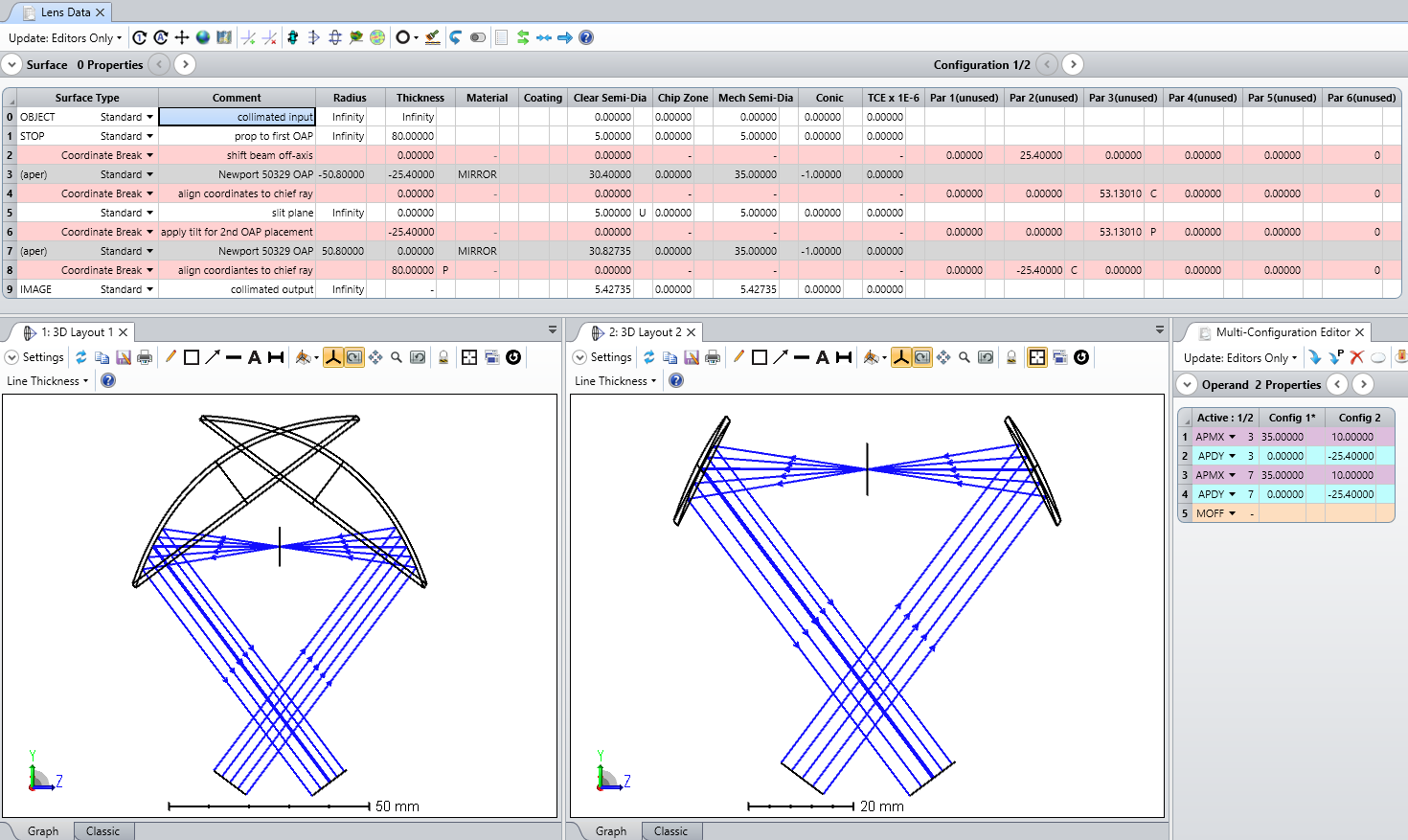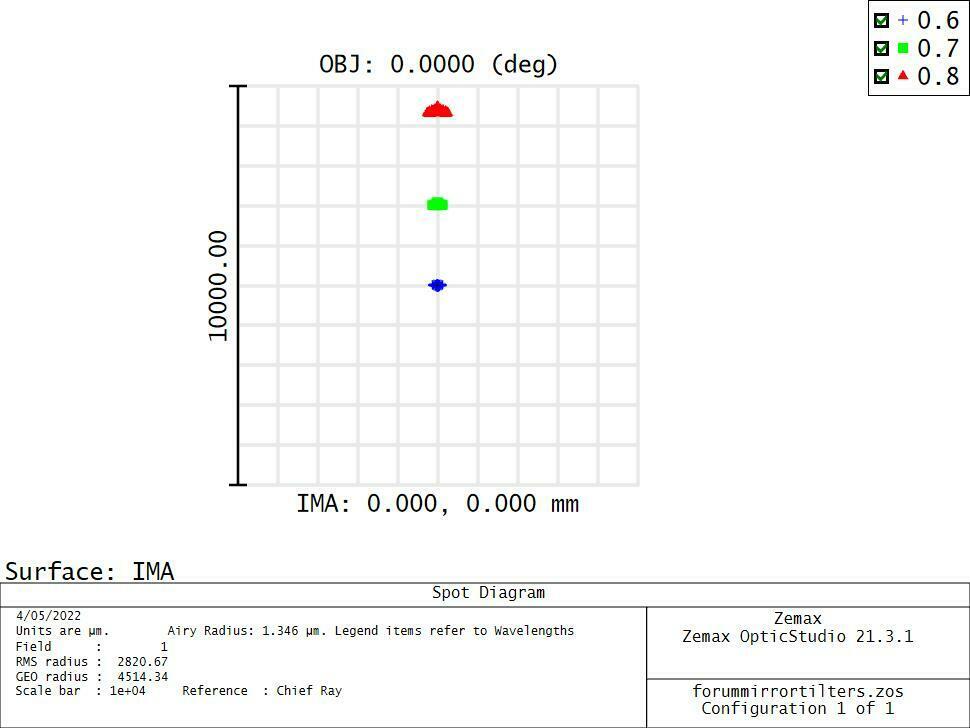I am trying to customise the design by using two off axis parabolic mirrors (an objective, a collimator, and finally a focus lens). Slit and diffraction grating will follow; however I am unable to get 2 X parabolic mirrors to behave properly. I need to get incident light to reflect from the first mirror to the second, and then pass to focus through the lens. As can be seen something is very wrong. I have followed the two parabolic mirror tutorials on Zemax however find the trouble starts by trying to have two parabolic mirrors. Any help would be great - and sorry for the continued requests for help.






